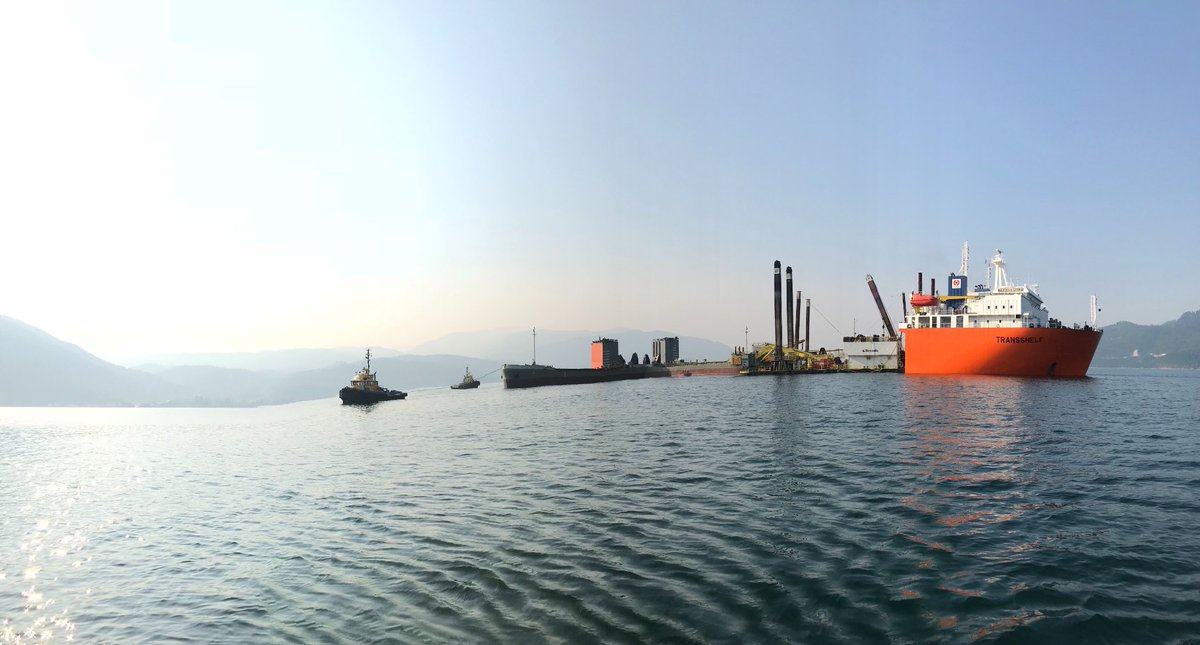
CALGARY — Greg Kist admits he was burned out when he resigned as president of Pacific NorthWest LNG at the end of 2014, as the Vancouver-based venture led by Malaysian energy giant Petronas advanced its ill-fated mission to build a liquefied natural gas project in B.C.
“I needed to decompress,” the 57-year-old gas industry veteran says of his decision to return to his home and family in Alberta.
Once hailed as a voracious new consumer of western Canadian natural gas, the nascent LNG industry was staggered by project delays and all but halted by declining global price trends, leading to Petronas cancelling its project in 2017.
Meanwhile, Kist went into retirement mode and avoided the natural gas business for the next couple of years.
So it’s surprising that Kist now finds himself back in the thick of things as president and CEO of Rockies LNG Partners, a consortium of nine natural gas producers who invited him back with a promise to try again to jumpstart an LNG export project.
The hope is that the former college basketball players’ experience in LNG and the natural gas business will help them to move their gas from the oversupplied and underpriced markets of North America to the promised land in Asia.
“I think the next six months are critical for us,” Kist said in an interview in the downtown Calgary offices of Birchcliff Energy Ltd., one of the consortium members.
The gas producers want to attract partners to build and operate what could be a 12-million-tonne-per-year LNG project to open by 2026, when forecasts suggest LNG demand will exceed supply. That means an investment decision must be made by the end of 2021.
Gas industry insiders used to say the solution to low prices is low prices — when prices go down, less is produced and scarcity makes prices go up again.
But that hasn’t happened. In March 2013, Canada produced about 14 billion cubic feet per day of natural gas. Six year later, the National Energy Board reports production had increased by 16 per cent to 16.2 billion cf/d, despite no rise in pricing trends.
Meanwhile, Canada’s largest gas customer, the U.S., is experiencing a shale gas boom that led to domestic production reaching 109 billion cf/d in March, up 35 per cent compared with 81 billion in the same month in 2013. Near-term prices in the U.S. have recently dropped to three-year lows on a glut of gas.
In mid-July, a group of nine Alberta producers — unrelated to Rockies LNG but with some common membership — released an open letter demanding the province support a plan under which royalty credits would be issued to producers who voluntarily cut production to boost low gas prices when supply overwhelms pipeline capacity.
Complaints about poor gas prices and interruptions in gas sales due to pipeline outages are common as Calgary-based natural gas producers roll out second-quarter results.
Painted Pony Energy Ltd. reported recently it was using some of its own natural gas to replace higher-priced diesel fuel in some well-completion operations, a move it says could save $100,000 per well.
Meanwhile, Perpetual Energy Inc. reported shutting down wells producing two per cent of its total output because it was more profitable to buy cheap gas on the market to satisfy its supply contracts.
In Western Canada, “dry” gas has become an unloved byproduct as producers continue to drill wells seeking the light petroleum liquids produced with the gas, especially in the Montney formation that underlies the northern Alberta-B.C. border, said Ian Archer, associate director of North American natural gas with IHS Markit.
One product in particular, condensate, commands prices in line with U.S. benchmark crude oil because it is needed to dilute oilsands bitumen to allow it to flow in a pipeline. Canada produced 417,000 barrels per day of condensate in March, up from just under 150,000 bpd in March 2013. Meanwhile, it still imports condensate from the U.S.
“They’re drilling for condensate and sometimes the volume of condensate is only, say, 20 or 30 per cent of the well (volume), but it’s going to be 40 or 50 per cent of the revenue,” said Archer.
“Then they have that 70 per cent gas volume they have to deal with.”
There have been more than 20 proposals to build LNG projects on Canada’s West Coast but construction has only begun on one, LNG Canada, and it’s not expected to open until 2023 or 2024.
It would take in up to 2.1 billion cubic feet per day of natural gas but most or all of it is expected to come from northern B.C. wells owned by partners in the project.
That’s not good enough for the long-suffering members of the Rockies LNG group, said Kist.
“If you look back over the history of LNG projects worldwide and certainly in Canada, they’re pretty much controlled by major international entities. Those entities tend to look after their own opportunities, not necessarily the opportunities for the producer groups.”